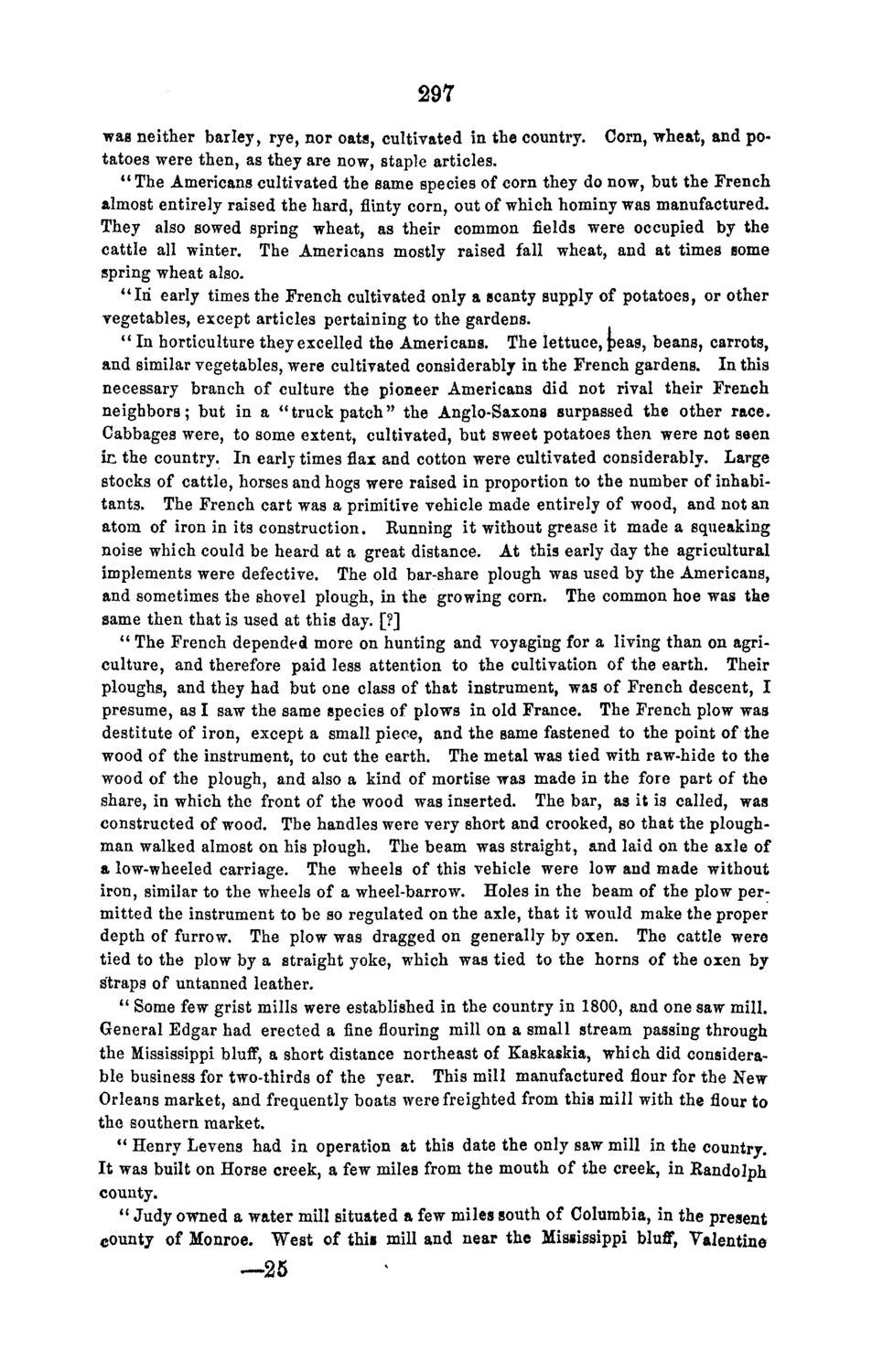| |
| |
Caption: Board of Trustees Minutes - 1868
This is a reduced-resolution page image for fast online browsing.

EXTRACTED TEXT FROM PAGE:
297 was neither barley, rye, nor oats, cultivated in the country. Corn, wheat, and potatoes were then, as they are now, staple articles. " The Americans cultivated the same species of corn they do now, but the French almost entirely raised the hard, flinty corn, out of which hominy was manufactured. They also sowed spring wheat, as their common fields were occupied by the cattle all winter. The Americans mostly raised fall wheat, and at times some spring wheat also. " I n early times the French cultivated only a scanty supply of potatoes, or other vegetables, except articles pertaining to the gardens. " In horticulture they excelled the Americans. The lettuce, peas, beans, carrots, and similar vegetables, were cultivated considerably in the French gardens. In this necessary branch of culture the pioneer Americans did not rival their French neighbors; but in a "truck patch" the Anglo-Saxons surpassed the other race. Cabbages were, to some extent, cultivated, but sweet potatoes then were not seen in the country. In early times flax and cotton were cultivated considerably. Large stocks of cattle, horses and hogs were raised in proportion to the number of inhabitants. The French cart was a primitive vehicle made entirely of wood, and not an atom of iron in its construction. Running it without grease it made a squeaking noise which could be heard at a great distance. At this early day the agricultural implements were defective. The old bar-share plough was used by the Americans, and sometimes the shovel plough, in the growing corn. The common hoe was the same then that is used at this day. [?] " The French depended more on hunting and voyaging for a living than on agriculture, and therefore paid less attention to the cultivation of the earth. Their ploughs, and they had but one class of that instrument, was of French descent, I presume, as I saw the same species of plows in old France. The French plow was destitute of iron, except a small piece, and the same fastened to the point of the wood of the instrument, to cut the earth. The metal was tied with raw-hide to the wood of the plough, and also a kind of mortise was made in the fore part of the share, in which the front of the wood was inserted. The bar, as it is called, was constructed of wood. The handles were very short and crooked, so that the ploughman walked almost on his plough. The beam was straight, and laid on the axle of a low-wheeled carriage. The wheels of this vehicle were low and made without iron, similar to the wheels of a wheel-barrow. Holes in the beam of the plow permitted the instrument to be so regulated on the axle, that it would make the proper depth of furrow. The plow was dragged on generally by oxen. The cattle were tied to the plow by a straight yoke, which was tied to the horns of the oxen by straps of untanned leather. " Some few grist mills were established in the country in 1800, and one saw mill. General Edgar had erected a fine flouring mill on a small stream passing through the Mississippi bluff, a short distance northeast of Kaskaskia, which did considerable business for two-thirds of the year. This mill manufactured flour for the New Orleans market, and frequently boats were freighted from this mill with the flour to the southern market. " Henry Levens had in operation at this date the only saw mill in the country. It was built on Horse creek, a few miles from the mouth of the creek, in Randolph county* " Judy owned a water mill situated a few miles south of Columbia, in the present county of Monroe. West of this mill and near the Mississippi bluff, Valentine —25
| |